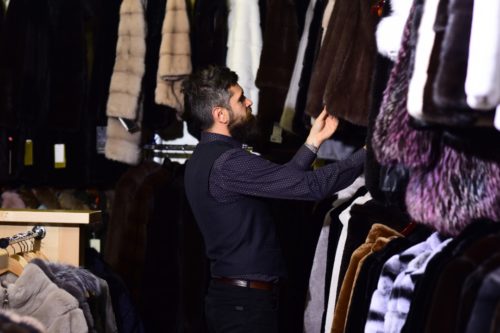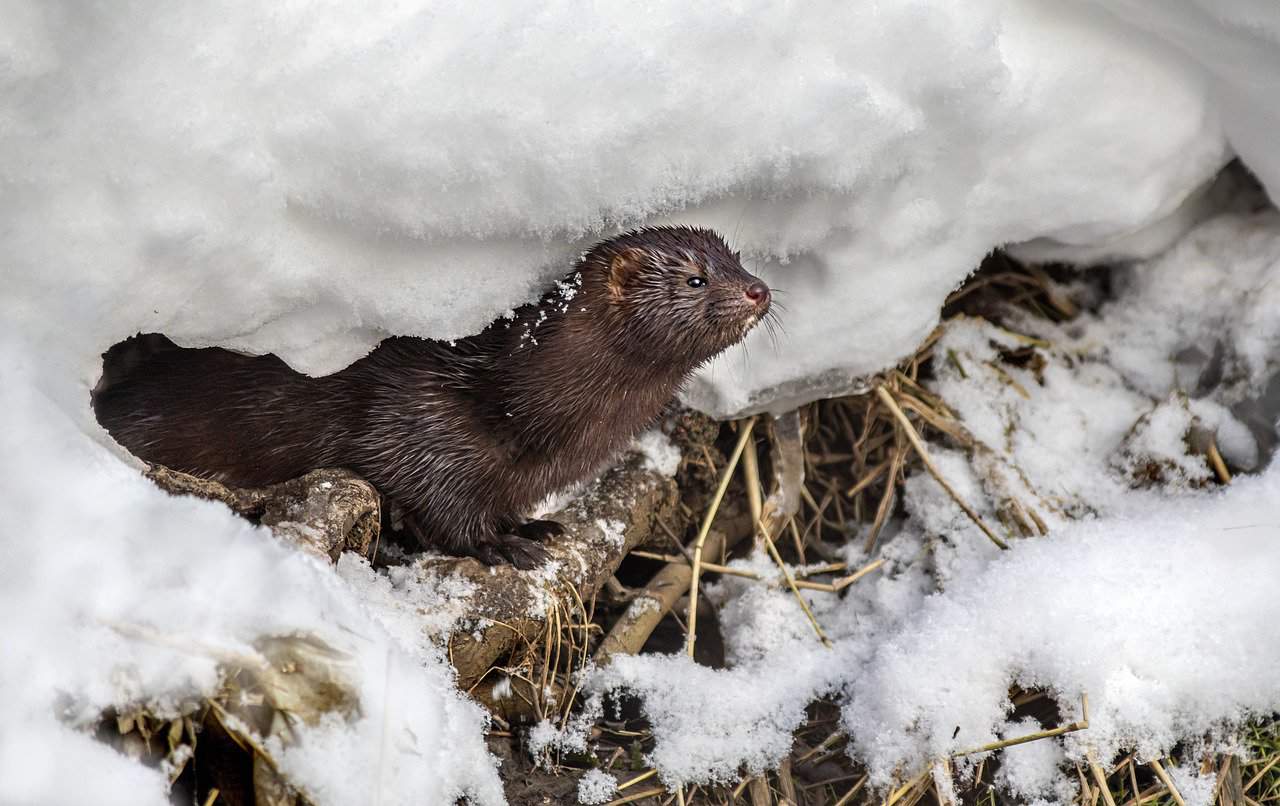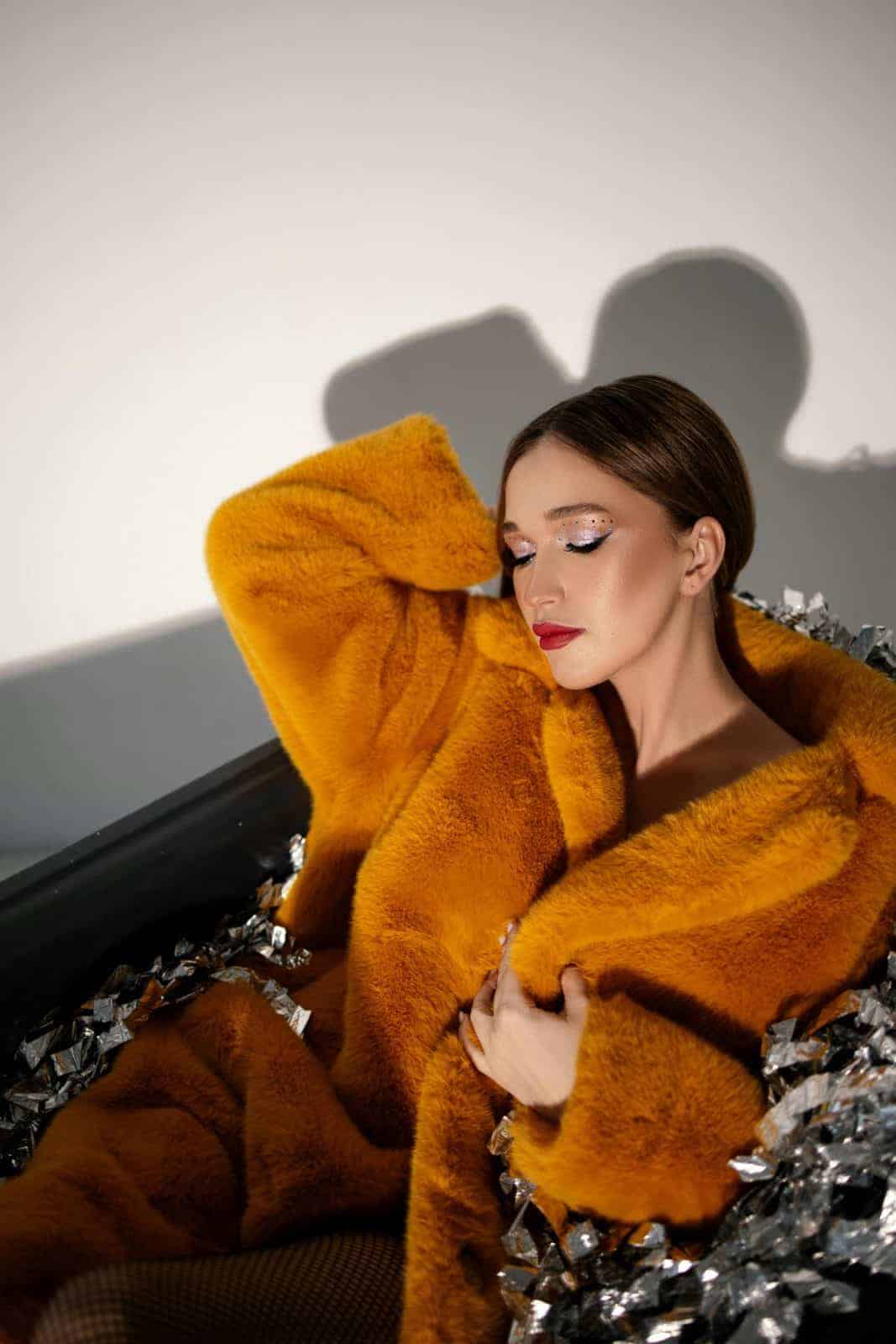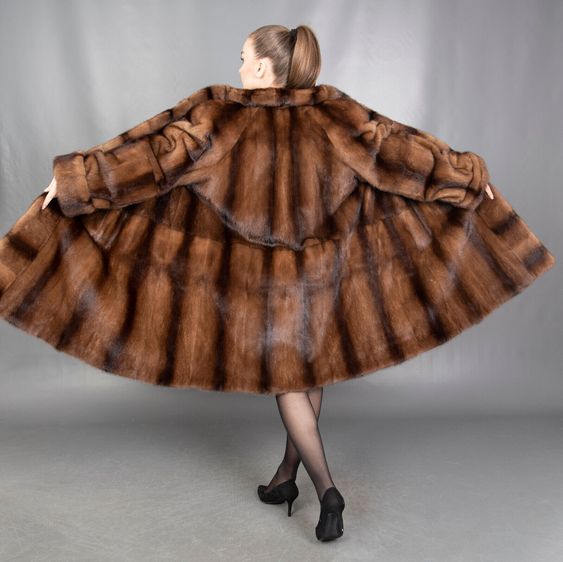The world of mink fur coats and accessories is fascinating. These luxurious garments and accessories have adorned fashionistas for ages, offering style and warmth.
Have you ever wondered what mink fur is and why mink fur coats are so sought after? Well, it’s simple – they’re the epitome of elegance and sophistication. Their luxurious appeal and unmatched quality make them a staple in high-end fashion.
But why a mink fur coat? It’s all about the plush texture, lightweight feel, and natural sheen. Plus, this warm garment can be an alternative to a jacket. Mink fur coats are also incredibly durable , ensuring they’ll remain a luxury piece in your wardrobe for years.
Not only that, but a rainbow of colors of dyed mink fur is available. From classic shades to unique hues, a dyed mink coat suits every style and preference.
Did you know that these treasures are known as the American mink? Yes, it’s the primary source of those luxurious fur coats you adore.
Renowned for its superior quality, the North American mink, especially popular in the United States, sets the standard for excellence in fur craftsmanship.
But what are the best mink fur colors? Well, the answer lies ahead.

Key Takeaway
- Mink fur coats are highly sought for their luxurious appeal, plush texture, lightweight feel, natural sheen, durability, and wide range of colors.
- Genetic mutations, selective breeding programs, and factors such as diet, climate, hair growth, and guard hair density determine the natural colors of mink fur.
- Mink fur has a rich history in the fashion industry. Over the decades, trends in color preferences have evolved, and it has continued to be popular among celebrities and vintage fashion enthusiasts.
- Ethical concerns surrounding mink farming practices have led to increased interest in cruelty-free alternatives like faux fur, rabbit fur, and innovative plant-based or recycled materials that mimic mink’s luxurious look and feel.
Natural Colors of Mink Fur
If you’re wondering what color mink fur is, well, the array of colors can be as captivating as the soft, luxurious texture itself. Let’s look at the different natural mink fur colors—it’s like exploring nature’s artwork.
The Most Dominant Mink Colors

Credits: @etsy_UK /Pinterest
Mink fur boasts a rich palette of natural colors, with some shades appearing particularly prevalent.
Among these, dark brown reigns supreme, exuding timeless elegance and sophistication. Its deep, luscious tones make it a perennial favorite among luxury fashion lovers and a perfect color for many consumers.
Additionally, the blue iris holds a special allure with its soft, captivating blend of gray, navy, and indigo undertones. You can choose this hue to add charisma to your mink coat.
In addition to classic shades, mink fur exhibits a range of other natural color options. One is gray fox fur, which can create a subtle elegance for the wearer.
While less common, these hues contribute to the diversity and charm of natural mink coats. And, of course, you can use it as an alternative style if you’re seeking a distinctive aesthetic.
Color Variations Explained by Genetic Mutations
Mink fur comes in many different colors because of special gene changes known as genetic mutations. These changes create various hues, from dark browns to bright light creams. It’s like a genetic rainbow in the mink world.
Moreover, the intricate workings of metabolic pathways and hair follicle development also affect mink fur coat color.
These biological processes play a pivotal role in determining the pigmentation and texture of mink fur, shedding light on the science behind its natural beauty.
The natural colors of mink fur come from substances called eumelanin and pheomelanin in the hair. A study of American mink found that specific genes and pathways significantly affect how fur develops.
For example, genes like TYR, TYRP1, and TYRP2 affect coat colors. Interestingly, young black minks have higher TYR levels than young white minks, but this changes as they grow up.
Thus, the genes controlling hair color are most active when minks are young, not adults.
A pathway called Tyrosine metabolism is also vital for mink fur development. Scientists who have compared different mink skin have found some genes that might be linked to the colors of their coats.
When researchers looked at the genetic makeup of mink populations, they discovered that black male mink pelts are genetically different from other colors. Mutations in genes like KIT and Ras-Related Protein-38 can cause specific coat patterns in American mink.
In short, mink fur color comes from genes that control the production of proteins in the hair and from substances like eumelanin and pheomelanin.
The Tyrosine metabolism pathway and genes such as TYR, TYRP1, TYRP2, KIT, and Ras-Related Protein-38 all affect the colors of mink coats. These genes are most active when minks are young, and mutations can lead to different coat patterns in mink populations.
Selective Breeding Programs to Achieve Beautiful Colors

Selective breeding programs have been super important in creating all those gorgeous colors you see in mink fur.
People have been raising and breeding minks in captivity to make their fur top-notch. They’ve been picky about which minks they breed together, focusing on fur color, size, and how chill they are.
Because many consumers wonder about mink fur color combinations, breeders have been working hard to give them exactly what they want. This means breeding minks with different colors and textures to match the fur market’s trends.
Thanks to this selective breeding, there are more types of colors in American minks these days.
Scientists have even figured out which genes make mink fur look a certain way. Sometimes, minks have gene mutations that give them unique coat colors, and breeding programs have encouraged these mutations to create even more variety in mink fur.
These breeding programs have ensured that mink fur comes in beautiful colors. They’ve used genetic mutations, how they raise the minks, and what people want in the fur market to give us many options for mink fur.
Factors Influencing Mink Pelt Color
Other factors influence the hue of mink pelt color besides genetic mutations. Well, wonder no more! Join me as I uncover the secrets behind the mesmerizing shades of mink fur, whether natural or ethically sourced.
Differences between Farm-raised Mink vs Wild Mink
When it comes to mink fur, where they’re raised makes a significant difference in their coat colors.
As mentioned, farm-raised minks are often bred for specific traits, including color variations. These minks are carefully selected to produce coats in various shades, from classic light brown to striking navy blue.
On the other hand, wild minks showcase a more natural palette. And that may be due to inheritance.
Importance of Hair Color, Growth Factors, and Guard Hair
The color of a mink’s fur is not solely determined by genetics.
Factors such as the length and density of guard hairs are crucial in the coat’s overall appearance. Additionally, growth factors during the mink’s development stage can impact the richness and depth of color.
Understanding these nuances is essential for creating stunning color combinations in the fashion industry.
Impact of Diet and Climate on Color
Believe it or not, a mink’s diet and environment can influence its fur color.
Minks in colder climates may develop denser fur with deeper hues to provide better insulation. Likewise, their diet can affect the quality and shade of their coat.
For instance, minks fed a diet rich in particular nutrients may display more vibrant colors. These subtle environmental factors add an intriguing dimension to the beauty of mink fur coats.

Ethical Sourcing of Mink Fur Coats
Besides understanding their origins, we should also consider their ethical sourcing.
As consumers wonder about breeding minks, we should familiarize ourselves with the considerations surrounding mink farming practices and explore cruelty-free alternatives. That way, we can ensure we enjoy luxury with a clear conscience.
Explanation of Concerns Over Mink Farm Practices
Concerns about mink farms encompass ethical, animal welfare, and public health issues. Minks raised for fur endure cramped wire cages, which can lead to stress, injuries, and abnormal behaviors.
Additionally, mink farms have been linked to disease transmission, including COVID-19, posing animal and human health risks. Animal welfare advocates criticize the unnatural living conditions and social isolation imposed on minks, causing mental and physical distress.
Thus, calls to phase out fur farming arise from these concerns. Some countries are already implementing bans for ethical and health-related reasons.
The debate underscores the need for more humane and transparent practices in the fur industry, prioritizing the well-being of animals and public health.

Cruelty-Free Mink Alternatives
Concerned about traditional mink fur’s ethical implications? Fear not! There are alternatives:
- Faux fur, crafted from synthetic materials, mirrors the mink’s luxurious look and feel without harming animals.
- Rabbit fur offers similar softness and silkiness, ethically sourced and cruelty-free. (We’ve got a blog to identify the coat’s fur type! Check it out!)
- Opt for used fur coats, honoring craftsmanship while reducing demand for new fur.
- Explore innovative alternatives like bio-based fur from plants or recycled denim fur, supporting eco-friendly fashion choices like GACHA’s biodegradable faux fur.
These alternatives, available in various colors and styles, provide the warmth and luxury of mink fur while upholding ethical standards. Plus, they allow for self-expression in fashion without compromising values.
Choosing the Right Mink Fur Color

Credits: @Breakninja /Pinterest
Now that we can use mink furs without feeling guilty about harming a cute animal, here’s an idea to find the perfect brown hue for dyeing this luxurious coat:
- Consider Skin Tone, Hair Color, and Personal Preferences: Consider what complements your natural features. Rich chocolate or golden mink suits warm tones, while cooler undertones match silver or blue. Hair color contrast can be stunning—dark fur with blonde locks or light fur with darker hair. Ultimately, personal preference reigns supreme!
- Combine Colors: Mix and match for fun! Add a pop of color with contrasting fur collars or cuffs—a spice to your wardrobe.
- Choose Top Mink Fur Brands and Designers: For quality and style, choose brands like Fendi, Gucci, or Prada. They offer timeless elegance that lasts generations.
- Tips for Finding the Best Mink Coat at a Good Price: Score a fabulous mink coat without breaking the bank by checking seasonal sales, exploring pre-loved options, or reputable online retailers. Always ensure top-notch fur and stitching quality for the best value.
Conclusion and Summary
Mink fur coats offer endless color options and blend perfectly with any style or preference. Their versatility makes them a wardrobe essential.
Mink’s neutral tones and luxurious feel make it a timeless choice, staying fashionable through generations. Its durability ensures it remains a staple, from classic coats to trendy jackets.
The mink fur coat’s unmatched quality and adaptability guarantee its enduring popularity in fashion. Whether in a dark, rich hue or a light, bright shade, mink fur coats are here to stay, adding elegance and warmth to any wardrobe.
